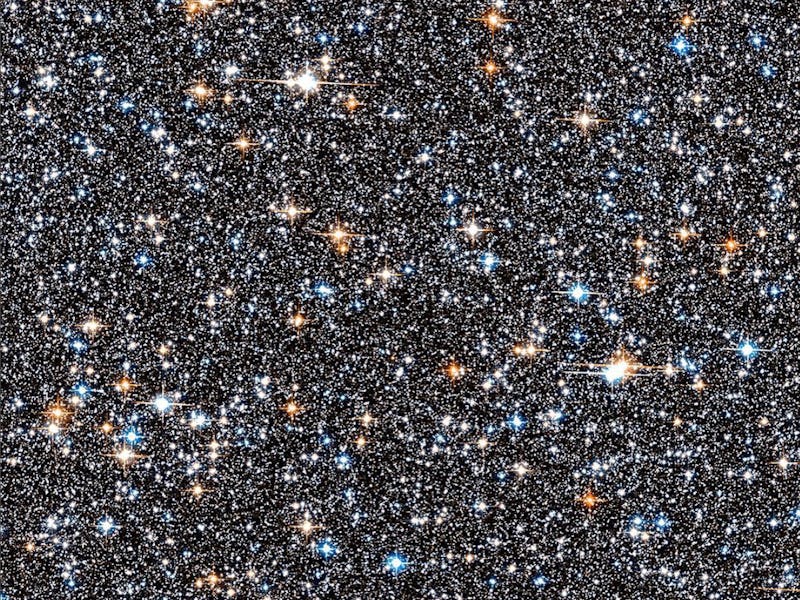Hubble Telescope's White Dwarf Photo May Hold Answers About How the Milky Way Was Formed
White dwarfs: so pretty, so old.

We may be one step closer to understanding how our galaxy was formed. NASA just posted a gorgeous, close-up photo of the Milky Way.
In what NASA calls a “cosmic archaeological dig,” researchers have discovered a cluster of ancient white dwarfs in the Milky Way’s central hub (or “bulge”) of stars 26,000 light years away. White dwarfs are extremely dense, dying stars with the accumulative mass of the Sun squeezed into an area only slightly larger than Earth.
Researchers say that this cluster of white dwarfs — captured by the Hubble Space Telescope as part of the Sagittarius Window Eclipsing Extrasolar Planet Search — may contain clues as to how the galaxy was formed, since the stars are so old. The stellar relics are about 12 billion years old, which means they’re much older than both our Earth and Sun.
According to NASA, the observations from these old stars have given scientists some of the most detailed data about our galaxy’s foundation, showing that Milky Way’s central cluster was formed in less than 2 billion years. Additionally, that bulge was the first of the star formations, and then the following generations of stars spiraled out around it afterward.
Here’s to Hubble helping us once again capture insane images of the (literal) space around us.